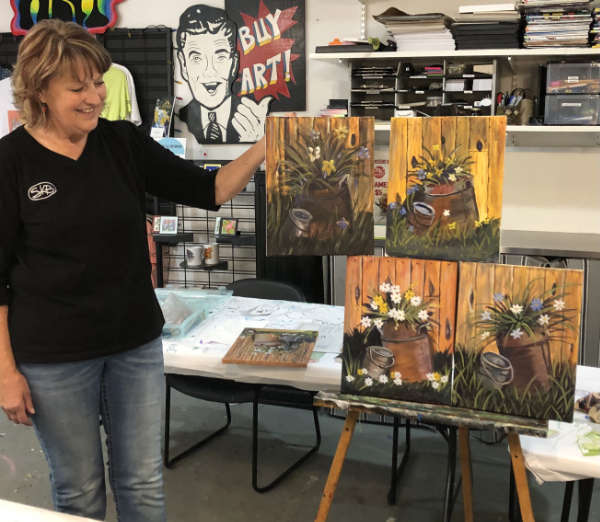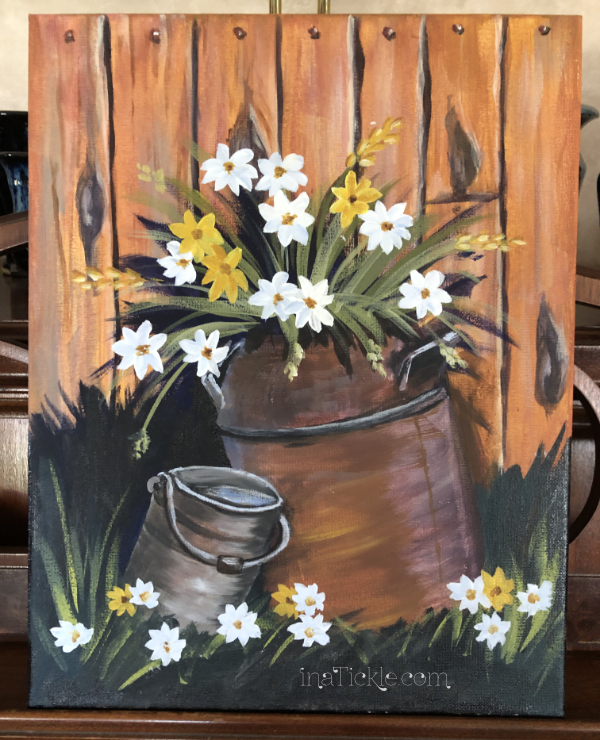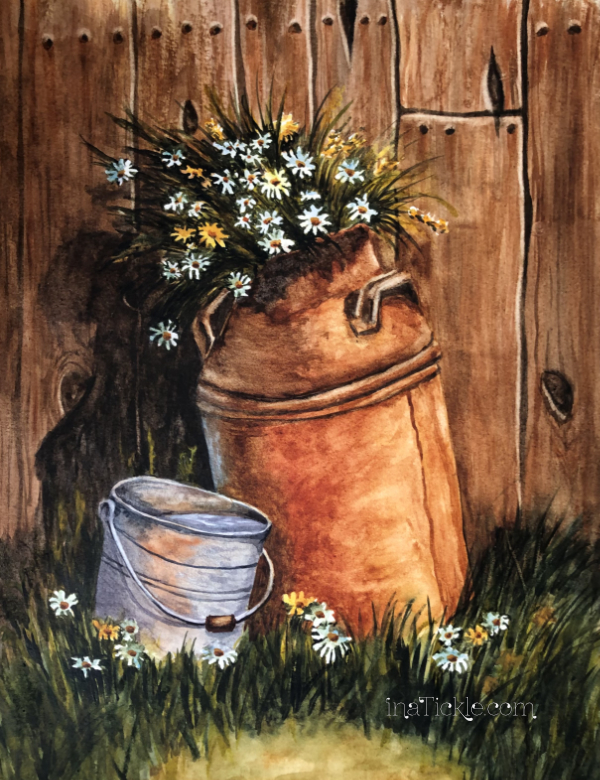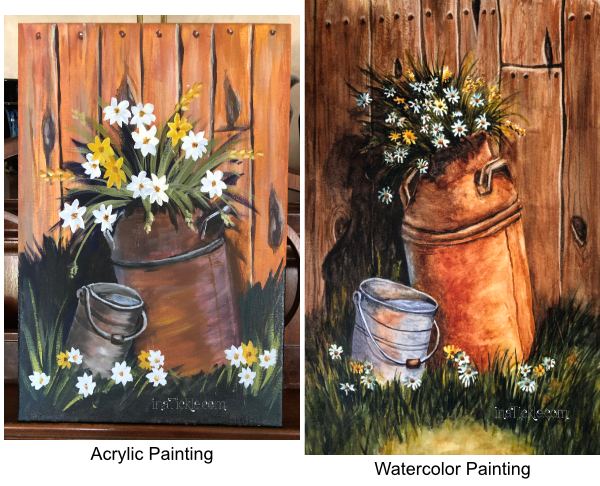Recently I had the opportunity to take a painting class at SMAC from a local artist, Peggy Dyke. She specializes in acrylic and oil painting, especially with themes of western art, cowboys, Native American art, and animals. She has been teaching art for thirty years. You can check out her work here.

The medium for this class was acrylics and as you can tell from the photo, each one of the four students painted very unique paintings following the same instructions. Her focus was on teaching us techniques using the acrylics, learning to blend paints and distinguishing lights and shadows.
I’ve done stage sets using acrylic paints, but not much in small paintings. Here is how my painting turned out.

If you have been following my blog for any time you know that I have focused on learning to paint with watercolors. Though the two mediums are both water-based mediums, they are very different in how they are used. Acrylics are opaque and watercolors are translucent. You can add more water to acrylics to thin the paint, but they still have an opaque look. You can also use the watercolors straight from the tube to get very strong color pigment, but that is only useful in very small quantities for little details.
Acrylics can be used on many surfaces such as paper, canvas, wood, and many more. Watercolor is limited to special watercolor paper or a surface on which a type of watercolor ground is used to accept the paint. I have watercolor ground but have not yet experimented with it. Acrylics paints work well with large projects, whereas watercolors tend to be used on medium to small size paintings.
Both watercolor and acrylic paints are rather quick drying on your painting project. However, on the pallet, there is a big difference. When the watercolor on the pallet dries, you only have to wet it to reactivate the paint and keep using it. When acrylic paint dries on the pallet, it is finished- no more using it. Dry watercolor on the painting can also be lifted off the painting by a wet brush or sponge to remove (depending on the staining power of the pigment) or slightly lighten the paint. That feature works great when you want to highlight a portion or “fix” a mistake. You can’t lift dried acrylic paint from the surface, but that’s ok because you can just paint over it!
The biggest hurdle in switching between the two mediums occurs in the mind with the order of painting. With acrylic painting, you can start with the background and darkest paint colors and work up in layers to the lightest colors including white. With watercolor, you have think think the other direction, starting with the lightest colors, and ideally leaving the white of the paper for your whites and work your way up in layers to the darker colors. You also must be aware of where various colors need to go on your painting so you don’t have an under-layer that won’t work with the painting in certain areas.
With acrylics, you can use thicker paint to create texture. With watercolors, the “texture” must be created by various techniques to give the illusion of texture rather than actual physical texture.
When I got home from the class, I was inspired to try the same design in watercolor. Here is my painting in watercolor.

I still prefer watercolor, but I’ve signed up for another class with Peggy in a few weeks to learn more about acrylic painting.

A couple years ago I took an online tutorial class making tunnel books using acrylics and ended up trying the same things in watercolor. Since I enjoy so many kinds of art and crafting, it is fun to try doing similar projects in different mediums.

Very nice.. I just started to paint. I’m using acrylic for now and I love it. I want to learn so much more.
Very good